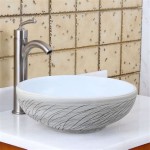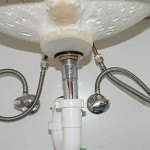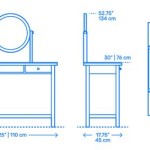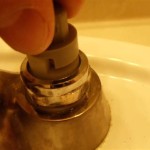Installing Vinyl Floor Tiles in a Bathroom
Vinyl flooring offers a durable, water-resistant, and cost-effective solution for bathroom renovations. Its ease of installation makes it a popular choice for DIY enthusiasts. This article provides a comprehensive guide to installing vinyl floor tiles in a bathroom, covering the necessary preparations, installation process, and essential tools.
Tools and Materials: Successful vinyl tile installation requires proper planning and gathering the necessary tools and materials. These include vinyl tiles, adhesive (if not peel-and-stick), measuring tape, utility knife with sharp blades, notched trowel (for adhesive application), spacers, straight edge or T-square, chalk line, safety glasses, knee pads, and a heavy roller.
Preparing the Subfloor: The existing subfloor must be clean, level, and dry before installing vinyl tiles. Any existing flooring, such as old vinyl, linoleum, or carpet, should be removed entirely. Imperfections in the subfloor, like cracks or uneven areas, should be repaired using a suitable patching compound. Allow the patching compound to dry completely according to the manufacturer's instructions. Thoroughly clean the subfloor to remove any dust, debris, or grease. This ensures proper adhesion of the vinyl tiles.
Acclimating the Tiles: Vinyl tiles are susceptible to expansion and contraction due to temperature changes. To minimize this, acclimate the tiles to the bathroom environment by leaving them in the room for at least 48 hours before installation. This allows the tiles to adjust to the room's temperature and humidity, reducing the risk of warping or buckling after installation.
Planning the Layout: A well-planned layout ensures a professional-looking finish. Start by finding the center of the room. Snap two chalk lines perpendicular to each other across the center points of the room's length and width. These lines will serve as guidelines for the first tile placement and ensure a symmetrical layout. Dry-lay a few tiles along the center lines to visualize the final appearance and make necessary adjustments before applying adhesive.
Applying the Adhesive (for non-peel-and-stick tiles): If using tiles that require adhesive, apply a thin, even layer to the subfloor using the notched trowel. Work in small manageable sections, typically about 2-3 square feet at a time, to prevent the adhesive from drying prematurely. Hold the trowel at a consistent angle to ensure uniform adhesive thickness.
Installing the Tiles: Begin laying the tiles at the intersection of the chalk lines, ensuring proper alignment. Firmly press each tile into the adhesive, working from the center outward. Use spacers between tiles to maintain consistent grout lines and accommodate expansion. As you work, periodically check the alignment with the chalk lines and a straight edge to avoid deviations.
Cutting Tiles: Tiles along the walls and around fixtures will likely require cutting. Measure the required dimensions carefully. Score the tile along the cutting line using a utility knife and a straight edge. Then, snap the tile along the scored line. For intricate cuts around pipes or curves, use a template or carefully cut with the utility knife.
Rolling the Floor: Once all tiles are installed, roll the entire floor with a heavy roller. This process ensures proper bonding between the tiles and the adhesive, removing any air pockets and creating a smooth, even surface.
Cleaning Up: Remove any excess adhesive immediately using a damp cloth or the manufacturer's recommended cleaning agent. Allow the adhesive to cure completely according to the manufacturer’s instructions before subjecting the floor to heavy traffic or moisture.
Considerations for Wet Areas: In areas directly exposed to water, such as the shower or bathtub surround, ensure the chosen vinyl tiles and adhesive are specifically designed for wet environments. Properly seal the perimeter of the room and around fixtures with a waterproof sealant to prevent water from seeping beneath the tiles.
Maintenance: Vinyl flooring is relatively easy to maintain. Regularly sweep or vacuum the floor to remove loose dirt and debris. Periodically mop the floor using a damp mop and a pH-neutral cleaner. Avoid abrasive cleaners or scrubbing pads, as these can damage the surface of the vinyl tiles. Promptly clean up spills to prevent staining or discoloration.
Safety Precautions: Throughout the installation process, prioritize safety. Wear safety glasses to protect your eyes from dust and debris. Use knee pads for extended periods of kneeling. Ensure the area is well-ventilated when working with adhesives and cleaning agents. Follow the manufacturer’s instructions for safe handling and disposal of materials.

How To Lay Vinyl Floor In A Bathroom Dove Cottage

How To Install Vinyl Plank Flooring In A Bathroom Fixthisbuildthat

Vinyl Planks In Bathrooms Residential Inspiration Flooring

How To Install Sheet Vinyl Floor Decor Adventures

How To Install Vinyl Plank Floors In A Bathroom Over Tile

Achieve High End Hardwood Looks For Your Dream Bath In Lvt

How We Installed Our Press And Stick Vinyl Floor Tiles

Install L And Stick Vinyl Floor Planks In The Bathroom More To Mrs E

How To Install Vinyl Plank Flooring In A Bathroom Fixthisbuildthat

Dos And Don Ts For Installing Vinyl Plank Floors In The Bathroom Advice Homeowners
Related Posts







